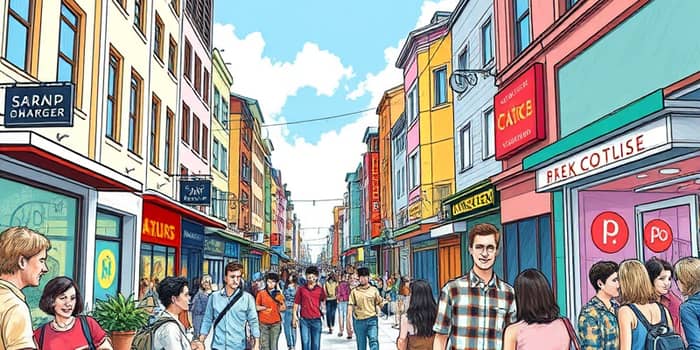
The retail landscape in 2025 is being reshaped by a powerful combination of steady in-store visits and a more disciplined financial environment. After nearly 20 high-profile retail bankruptcies in 2024, market watchers from Moody’s to the National Retail Federation now anticipate a downturn in filings as brick-and-mortar venues draw customers back through their doors. This article explores the data behind the trend, the strategies fueling resilience, remaining vulnerabilities, and the broader economic backdrop that colors these developments.
Foot traffic in U.S. retail stores has held remarkably stable amid broader economic uncertainty. In March 2025, overall visits dipped by only 0.3% year over year, while total retail sales climbed by 3.4%. That combination suggests consumers are spending more per trip, driven in part by pent-up demand for experiences and the appeal of personalized service.
Key year-over-year performance highlights include:
Discount and dollar stores kicked off 2024 with strong momentum early, but big-box and specialty retailers caught up by late 2024 as consumer sentiment improved and inflation cooled. This stability in visits underpins fresh optimism around retail recovery.
Despite a 14.7% rise in total business bankruptcy filings from March 2024 to March 2025, distress within the retail segment appears set to ease. Moody’s attributes this improvement to fewer retailers now with weak capital structures and improved access to capital for those on the brink.
During 2024, marquee names such as Party City, The Container Store, Rue 21, Joann (twice), and Big Lots shuttered or restructured. With many undercapitalized players already forced out, the sector has undergone a painful but necessary culling, leaving behind a leaner field of more financially resilient operators.
Moody’s projects a decline in retail bankruptcies in 2025, offering a rare bright spot amid broader insolvency pressures. However, record-setting store closures—an estimated 15,000 U.S. outlets forecast to shut their doors this year—remind us that foot traffic gains do not guarantee survival without strategic adaptation.
Surviving retailers are those embracing innovation in the in-store experience and tightening integration with digital channels. Key strategic pivots include:
Examples abound: grocery chains that blend click-and-collect with in-store sampling, and fitness brands that host community wellness events. These tactics boost average transaction values and foster loyalty, turning occasional visitors into repeat customers.
As consumer preferences shift toward higher-value, experience-rich offerings, retailers that combine digital precision with warm, engaging physical environments are best positioned to thrive.
Even with overall improvement, pockets of distress still persist. Discretionary categories—especially home goods, hobby shops, and mid-tier apparel chains—face ongoing headwinds as consumers rein in non-essential spending. Notable high-risk or recently filed names include Joann, Saks Global, Guitar Center, and At Home.
While sector-wide vulnerability has diminished thanks to prior culling, the next wave of closures is likely to target retailers unable to justify their physical footprint or pivot to high-margin formats.
The contrast between declining retail bankruptcies and rising total filings underscores a complex economic backdrop. U.S. bankruptcy cases climbed from 20,316 in March 2024 to 23,309 in March 2025—a 14.7% jump reflecting distress across energy, manufacturing, and services.
Yet retail’s relative stability has inspired cautious optimism. The National Retail Federation and Placer.ai point to cooling inflation trends and improved consumer sentiment as pillars supporting continued recovery. Falling borrowing costs and fresh capital injections into at-risk retailers further bolster the case for fewer 2025 retail insolvencies.
Retailers navigating this transitional period must prioritize agility, customer centricity, and financial discipline. Practical measures include:
For retailers: optimize store layouts, invest in staff training, refine loyalty programs, and harness analytics for real-time decision-making. For consumers: seek value through curated experiences, support local and adaptive brands, and explore the best of both online and in-store offerings.
As foot traffic resurges, retailers that embrace innovation and discipline will find new pathways to growth, while those clinging to outdated models may struggle in an increasingly competitive landscape. The year ahead promises challenges, but also opportunities for those ready to evolve.
References













